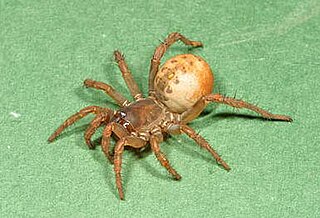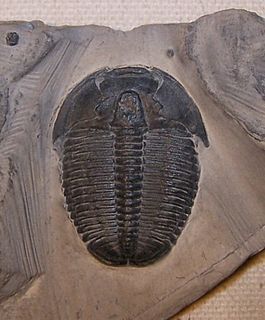 W
WAnomopoda is a suborder of the order Cladocera. These crustaceans, a type of water flea, are members of the Class Branchiopoda. The Anomopoda typically have five pairs of thoracic limbs, but sometimes have six pairs. The head of the Anomopoda lacks a clear separation from the trunk and the posterior, while the abdomen area gradually merges with the anterior of the trunk.
 W
WCalymenina is a suborder of the trilobite order Phacopida.
 W
WCheirurina is a suborder of the trilobite order Phacopida. Known representatives range from the uppermost Cambrian to the end of the Middle Devonian (Givetian). Cheirurina is made up of a morphologically diverse group of related families.
 W
WChordeumatida is a large order of millipedes containing some 1200 species with a nearly worldwide distribution. They possess around 30 body segments and reach about 25 mm (0.98 in) in length.
 W
WCorynexochina is a poorly understood subdivision of the trilobite order Corynexochida.
 W
WChordeumatida is a large order of millipedes containing some 1200 species with a nearly worldwide distribution. They possess around 30 body segments and reach about 25 mm (0.98 in) in length.
 W
WChordeumatida is a large order of millipedes containing some 1200 species with a nearly worldwide distribution. They possess around 30 body segments and reach about 25 mm (0.98 in) in length.
 W
WThe Mesothelae are a suborder of spiders that includes a single living (extant) family, Liphistiidae, and a number of extinct families. This suborder is thought to form the sister group to all other living spiders, and to retain ancestral characters, such as a segmented abdomen with spinnerets in the middle and two pairs of book lungs. Members of Liphistiidae are medium to large spiders with eight eyes grouped on a tubercle. They are found only in China, Japan, and southeast Asia.
 W
WOlenina is an extinct suborder of the trilobite order Ptychopariida.
 W
WThe Opisthothelae are spiders within the order Araneae, consisting of the Mygalomorphae and the Araneomorphae, but excluding the Mesothelae. The Opisthothelae are sometimes presented as an unranked clade and sometimes as a suborder of the Araneae. In the latter case, the Mygalomorphae and Araneomorphae are treated as infraorders.
 W
WThe Phacopina comprise a suborder of the trilobite order Phacopida. Species belonging to the Phacopina lived from the Lower Ordovician (Tremadocian) through the end of the Upper Devonian (Famennian). The one unique feature that distinguishes Phacopina from all other trilobites are the very large, separately set lenses without a common cornea of the compound eye.
 W
WThe Prostigmata is a suborder of mites belonging to the order Trombidiformes, which contains the "sucking" members of the "true mites" (Acariformes).
 W
WPtychopariina is an extinct suborder of trilobites of the order Ptychopariida. Also known as the primitive Ptychopariida, they are a notably wide and varied taxon. Some of the representative genera include Elrathia, Densonella, Norwoodia, Tricrepicephalus, Conocoryphe, and Modocia.
 W
WSenticaudata is one of the four suborders of the crustacean order Amphipoda. It includes some 5000 species, which is more than 50% or the currently recognized amphipod diversity.
 W
WSinocallipus is a genus of predominantly cave-dwelling millipedes in the order Callipodida. Five of the six known species are found in limestone caves on the Indochinese Peninsula from Vietnam to southern China, and it is the only callipodidan genus entirely confined to the tropics. Individuals range from 40–70 mm (1.6–2.8 in) long and possess 55 to 70 segments. Sinocallipus is the sole taxon of the callipodidan suborder Sinocallipodidea, and thought to be the most primitive and sister group to all other callipodidans. In contrast to many other millipede groups, the gonopods of Sinocallipus show little variation between species, while other characters such as color, size, and other body parts differ more noticeably between species.
 W
WChordeumatida is a large order of millipedes containing some 1200 species with a nearly worldwide distribution. They possess around 30 body segments and reach about 25 mm (0.98 in) in length.